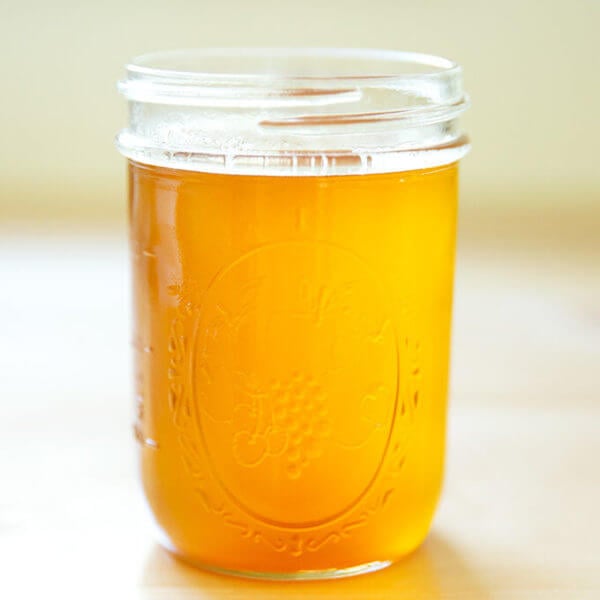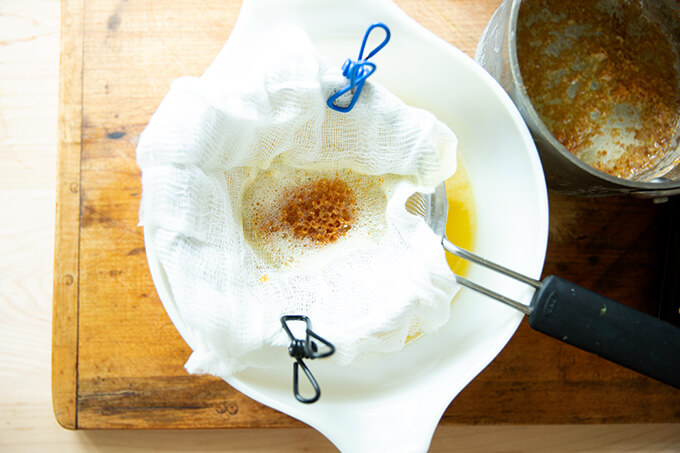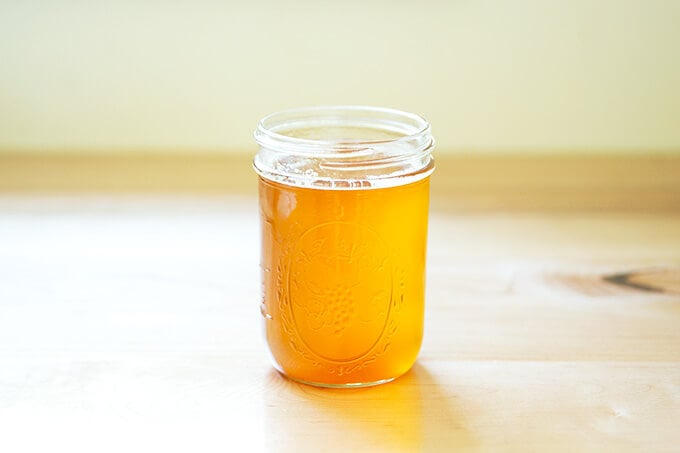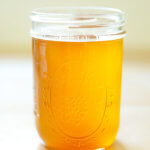How to Make Ghee: A Step by Step Guide
This post may contain affiliate links. Please read my disclosure policy.
One of the FAQ’s in Priya Krishna’s Indian-ish is: “If a recipe calls for ghee or olive oil, what’s better?” To which Priya responds: “Ghee. Always ghee. There is nothing in the world that makes Indian food taste better than the rich, nutty flavor of ghee.”
Roger.
There is no “recipe” for ghee in Indian-ish, just a little guidance: “Melt a stick of butter, turn off the heat, skim the white stuff off the top, and you’ll be left with clear ghee.”
Since I had many recipes in Indian-ish flagged, I made a pound of ghee. Advised by a friend, I strained the nutty, clarified butter through cheesecloth, and it worked like a charm.
How Does Ghee Differ from Clarified Butter?
The process of clarifying butter removes water (through evaporation) and milk solids (through skimming or straining).
Ghee is clarified butter taken one step further, until the milk solids turn brown, leaving behind nutty, toasty liquid gold.
Why Use Ghee? And Why Has Ghee Become A Darling of the Wellness World?
Cooks/chefs love cooking with clarified butter because, without those milk solids in the mix, the butter has a higher smoke point, which allows it to be used at higher temperatures without burning. Ghee has the added bonus of imparting nutty, toasty flavors to the food it is cooking.
Ghee is loved by the wellness world because many people with dairy sensitivities don’t have to give it up — when the milk solids are removed from the butter, so are most of the problematic lactose sugars and casein proteins.
Woohoo! Go Ghee!
How To Make Ghee: In a medium saucepan over medium to medium-high heat, melt as much butter as you like.
Within five minutes, you will see a brown rim around the top of the bubbling butter. It should begin smelling slightly nutty. This is a sign it’s just about done.
Strain the ghee through a cheesecloth.
These are butter solids left behind.
Ta-da! Ghee.
Ghee, cooled to room temperature.

How to Make Ghee: A Step by Step Guide
- Total Time: 10 minutes
- Yield: 2 cups
Description
Ghee is clarified butter cooked one step further till the milk solids turn slightly brown, leaving behind nutty, toasty liquid gold.
As I researched how to make it, I came across many recipes that call for simmering the butter slowly for 15 to 20 minutes, skimming off the white solids from the top, then cooking the fat that remains till it becomes toasty. This no-doubt is the proper way to do it, but I’ve found cooking the butter over medium to medium-high heat for about 5 minutes achieves the same end point: slightly toasted clarified butter.
Ingredients
- 1 lb. unsalted butter, or more or less
- cheesecloth
Instructions
- In a medium saucepan over medium heat, melt as much butter as you like.
- Adjust heat to that butter is bubbling, not violently but at a nice clip. Within five minutes, you will see a brown rim around the top of the bubbling butter. It should begin smelling slightly nutty. This is a sign it’s just about done.
- Strain the ghee through a cheesecloth-lined sieve.
- Transfer ghee to a glass jar, leaving any dark solids that may have slipped through the sieve behind.
- Prep Time: 1 minute
- Cook Time: 5 to 7 minutes
- Category: Sauce
- Method: Stovetop
- Cuisine: Indian
This post may contain affiliate links. Please read my disclosure policy.




















6 Comments on “How to Make Ghee: A Step by Step Guide”
And then how to properly store it? And for how long?
You can store it at room temperature, from what I understand, for a very long time. If this makes you nervous, I would store it in the fridge if you don’t think you’ll use it within a week or so.
Hi Alexandra! I love the ghee making recipe. I am Indian and I hope that Indian food shows up in more people’s lives. Ghee is delicious. Ghee can be refrigerated but the key thing is you want to keep it dry. Moisture promotes mold growth. My mom keeps ghee on the counter but it it used for everything. It will not spoil as long as you use a clean, dry spoon every time you dip into it. This is very important! Fridge is fine if you don’t think you will be using it all the time.
Sonia, thank you for all of this! Such a great tip re using a clean spoon each time. I have had my ghee at room temperature since I made it, and I love having it by the stove at the ready. It really is delicious. Thank you again for writing 🙂
You mean ghee = glee!
I think I will be trying this soon!
Thank you for step by step instructions 😊
🙂 🙂 🙂 Love it!